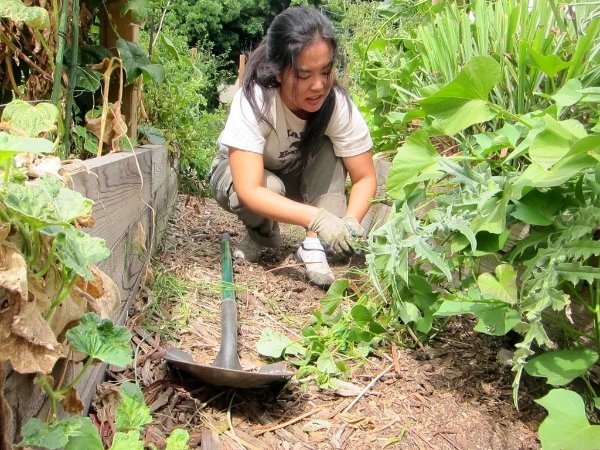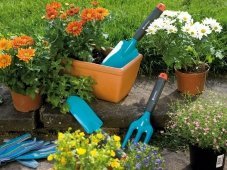Garden work in July
July is the hottest month. This is the month of continued growth of shoots, fruit and berry plants, the formation of fruit buds for next year's fruit harvest. In July, as in no other summer month, intensive watering and organic feeding (mullein, slurry, bird litter) and nitrogen-potassium fertilizers are required. Top dressing should be combined with loosening the soil and copious irrigation. At the same time, top dressing is carried out through leaves (foliar), spraying with urea solution (50g per 10 l / in). If you add wood ash (50-100 g per 10 l / in) to the urea solution, which contains potassium fertilizer, the result will be more effective.
In early July, it is necessary to conduct an additional inspection of bushes of gooseberries and currants. The berries, damaged by caterpillars of the fire, are collected and destroyed.

We also continue weeding the garden from weeds and loosening the trunks and also between the rows and the earth around the bushes.
In the presence of a large harvest of fruit trees, special supports must be installed to avoid splitting and breaking branches. If this has already happened, then the place of splitting or breakage must be very firmly fastened, maximally bringing it to its original position.
Fallen fruits from the trees should be systematically collected (preferably daily). These fruits are destroyed by digging deeply into the ground (half a meter).
There is a struggle against decay (as hatching, especially on currant bushes and young apples), apple moth, second-generation sawfly on gooseberries and currants. On gooseberries, if necessary, the struggle with American powdery mildew is conducted.
When harvesting strawberries, you should mark high-yielding bushes in order to obtain a planting material from them. At the same time, low-yielding or barren bushes should be noted with the aim of replacing them.
If the strawberries are affected by gray rot, they should be collected separately and then buried in the ground.

The whiskers from the high-yielding strawberry bushes should be pinned down and sprinkled with damp earth (for good development and rooting).
After harvesting strawberries, the strawberry beds should be removed: weeding, removing excess mustaches and dried leaves. The soil needs to be loosened up and fertilizers added to it, followed by copious watering.
In mid-July, the summer formation of fruit trees takes place along the spindle-shaped and flat forms of crowns (for this, the shoots are bent to the horizontal position). The trees formed behind the direction of growth of each shoot should be carefully monitored and corrected in a timely manner (strengthen and weaken its growth). At the beginning of the third decade, sprinkling of the crown of summer apple varieties is made to reduce pre-harvesting of apples with KANU solution (sold in powder).
In the third decade of July, the branches of the pear crown and apple-tree and wildflowers, the desired varieties (the plum and cherry are ovulated a week earlier) should be vouched (summer vaccination with a "sleeping" eye).
The soil is being prepared for planting strawberries: compost, manure and phosphorus-potassium fertilizers are introduced. When landing in July for the next year you will get a full harvest of berries.






